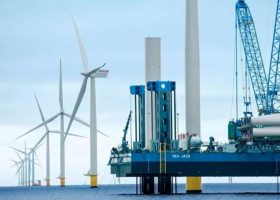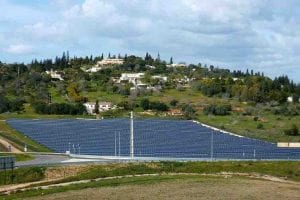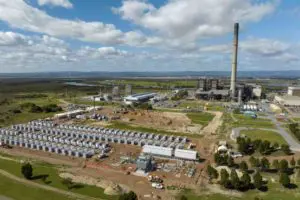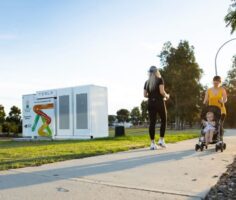Offshore wind company Star of the South is doing a deal with one of the Hunter Valley’s most entrenched engineering businesses, as it seeks to build community relationships for its New South Wales (NSW) offshore wind project in the face of well-funded and political opposition.
The company is working with Ampcontrol, an engineering firm that’s been working in the Hunter region for 55 years, to kick start work on its next proposed offshore wind energy project, Destiny Wind.
Ampcontrol has been talking to Destiny Wind for almost 12 months about what the partnerships might look like, says Ampcontrol managing director and CEO Rod Henderson.
He says they’ll be offering services around elements such as substation design, optimisation of electrical plant, and even the initial servicing of lidar systems to measure waves.
The partnership with Ampcontrol is an example of how offshore wind can draw on the history of traditional energy generation in the region, says Destiny Wind acting project director, Erin Coldham.
“Personally, I first toured the Ampcontrol facility in mid-July… Having worked in the offshore industry for six years, and also working on a global scale, seeing that we have advanced manufacturing capabilities and innovation like that coming out of Ampcontrol, is exciting,” she told RenewEconomy.
Learning from Gippsland
Destiny Wind, backed by clean energy fund manager, Copenhagen Infrastructure Partners (CIP), is one of the proposed floating offshore wind project that will apply for a feasibility licence for the Hunter offshore zone.
Competition for the relatively small 2,000km square zone, which stretches between Swansea and Port Stephens, is likely to be hot with applications for licences closing in November last year.
Known applicants include Bluefloat Energy and Origin Energy’s 1.7 gigawatt (GW) Eastern Rise project, EDF Renewables Australia for a 10 GW project, and OceanEx’s and Equinor’s 2GW Novocastrian project.
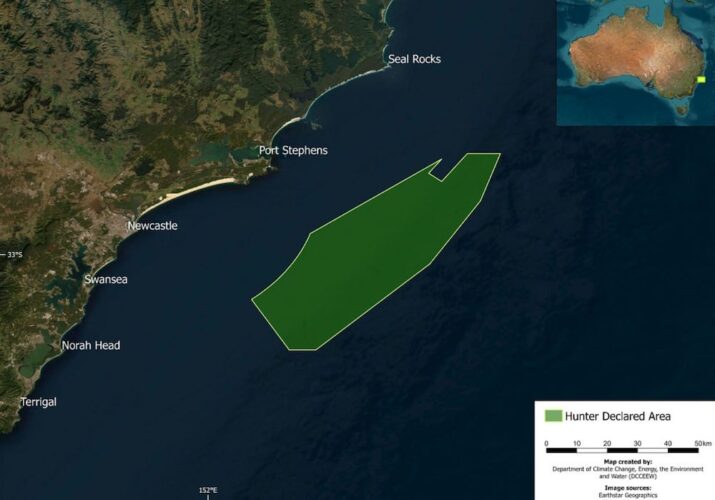
But where the Star of the South project has been very public and active for the last five years after doing a deal with the previous federal government to get an exploration licence, Coldham says the strategy for Destiny Wind is different.
They’ve not announced the proposed size of the Destiny Wind project nor officially launched it, preferring instead to wait for the feasibility licensing process to run its course.
In 2022, Offshore Electricity Act which has levelled the playing field, so the kind of special treatment that Star of the South received for being the first mover in Gippsland is no longer on the table.
Coldham says the legislative framework now in place, as well as an awareness of consultation fatigue in Gippsland caused in part by developers wanting to publicly prove how much they deserved a feasibility licence, has changed the approach for Destiny Wind — they’re doing initial work such as lining up potential partnerships, but not diving into deep community engagement.
Furthermore, some potential partners and stakeholders in the Hunter region aren’t keen to start talking to companies until licences are issued.
Renewables already deeply entrenched in Hunter region
The Hunter offshore wind zone was declared in July last year and has become a lightning rod for opposition to offshore wind specifically, and renewables generally.
But companies like Ampcontrol have been working for much longer to instill in the Newcastle and surrounding areas the benefits that can come from the transition to renewables, says Ampcontrol managing director and CEO Rod Henderson.
“Our company grew up in the coal sector, and we made a plan five or six years ago that while we’ll still service our customers in that industry, our future is in the renewables industry,” he told RenewEconomy.
“We want to be a good community citizen in the environments we operate in, but we also find that getting our brand out to potential employees is a massive benefit to us.”
The company has been marketing that change of strategy hard, with sponsorships of the likes of the Newcastle Jets soccer team, the local Westpac helicopter, the Lake Macquarie triathlon and the Got Your Back Sista domestic violence charity, all of which makes the renewables part of the business more visible in the community and makes them more attractive to young potential hires, Henderson says.
He’s diplomatic about the opposition to offshore wind, saying healthy debate to force proponents to do their due diligence is good, but he personally thinks there is enough momentum from industry and enough government support for at least one project in the Hunter zone to get up.
As opposition to renewables in NSW becomes more organised and well-funded, the messaging around jobs and opportunities that companies like Ampcontrol have been spreading is being taken up by a variety of other groups.
This month Newcastle was the site of one rally by worker unionists, doctors, teachers and environmental activists in support of renewable energy. The counter argument they used to the renewables opponents was how the energy transition will create new jobs and offer more income to regional residents.
Turning back the clock on renewables in the Newcastle region is impossible anyway, as major projects are already underway at Liddel, where AGL will install a 500 megawatt (MW) battery, the 250 MW Muswellbrook pumped hydro scheme, and Orica’s and Origin Energy’s joint hydrogen hub and the Port of Newcastle’s green hydrogen project.


